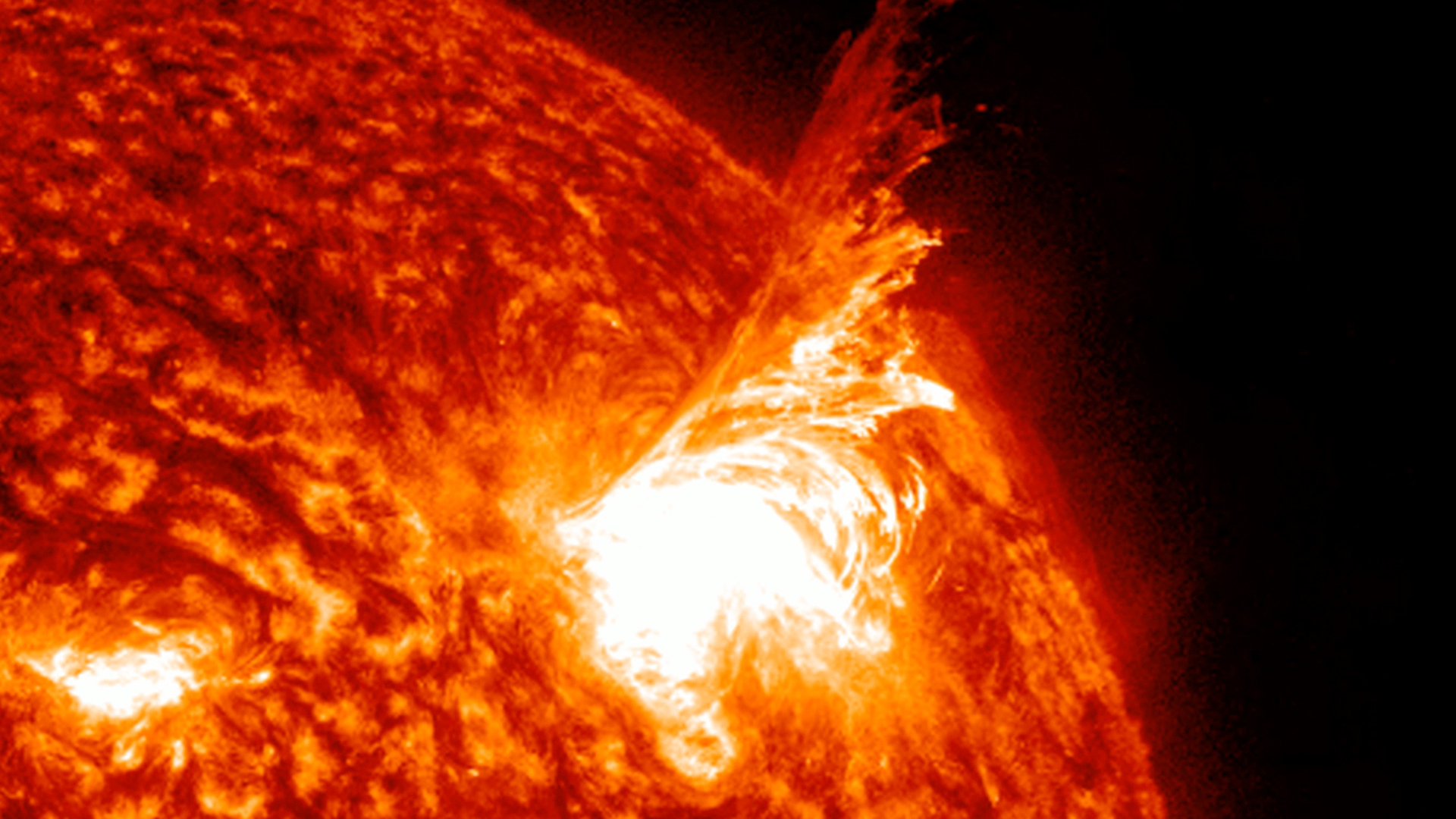
The sun erupted in a dazzling spectacle on Monday (June 3), firing off an intense solar flare captured in stunning detail by a NASA solar observatory.
But when you look closely at the eruption, it appears that much of the solar material in the vast plasma plume didn't manage to escape the grasp of the sun. In the video, captured by NASA's Solar Dynamics Observatory during an M-class solar flare, you can see a huge plasma plume rise from the sun's surface, only to be reeled back in during an apparent "failed eruption."
Solar astrophysicist Ryan French took to X to describe the event, which occurred at 10:11 a.m. EDT (1411 GMT) on Monday. "A gorgeous #SolarFlare on the Sun today! Just look at how the falling plasma impacts and flows down the magnetic field - physics in action." French wrote. "As further data becomes available, it looks like this event is a prime example of a 'failed eruption'! Material attempted to leave the Sun, but didn't quite escape." French continued.

Solar flares are bursts of electromagnetic radiation from the surface of the sun. They are classified by strength into lettered groups with X-class being the most powerful, followed by M-class flares are 10 times less powerful than X-class flares, then C-class flares which are 10 times weaker than M-class flares, B-class are 10 times weaker than C-class flares and finally, A-class flares which are 10 times weaker than B-class flares and have no noticeable consequences on Earth.
Within each class, numbers from 1-10 (and beyond for X-class flares) describe a flare's relative strength. The recent solar flare clocked in at M4.8 according to Spaceweather.com.
Related: Astrophotographer captures stunning of giant sunspot
The lack of apparent eruptive material during the M-class solar flare is bad news for northern lights chasers as such eruptions can sometimes lead to impressive aurora shows like the ones observed all over the world in May.
Powerful solar flares like the one witnessed on June 3 can sometimes be accompanied by a coronal mass ejection (CME) — an expulsion of plasma and magnetic field from the sun. When CMEs strike Earth they can trigger geomagnetic storms which, in turn, can lead to dynamic aurora displays beyond their usual polar limits.
But the apparent "reeling in" of solar material as seen in the NASA Solar Dynamics Observatory footage implies no such eruption occurred.
"It looks like nearly all of the plasma associated with the M4 flare eruption fell back into the Sun and was reabsorbed with just a small puff appearing in coronagraph imagery," wrote space weather forecaster and meteorologist Sara Housseal in a post on X.
It looks like nearly all of the plasma associated with the M4 flare eruption fell back into the Sun and was reabsorbed with just a small puff appearing in coronagraph imagery. 🥱👎🏻 pic.twitter.com/fYZ1kaxnI1June 3, 2024
It looks like June 3 was a quiet day all around for CMEs according to solar physicist Keith Strong's X post on June 3 "Just 4 CMEs detected by SOHO today. They seem to be very obscure ones - hard to see in the data shown here. They seem barely more than "puffs"!







